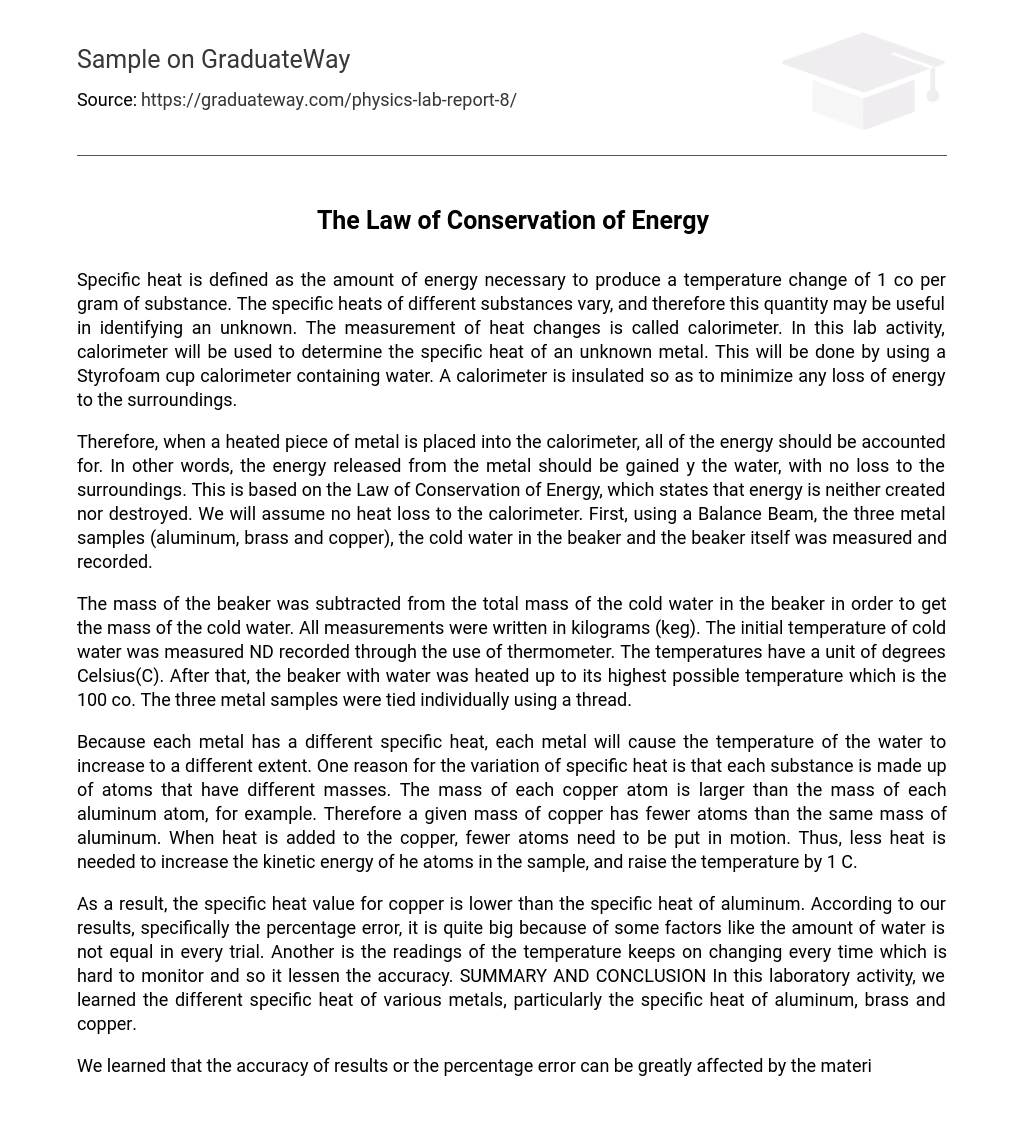Specific heat is defined as the amount of energy necessary to produce a temperature change of 1 co per gram of substance. The specific heats of different substances vary, and therefore this quantity may be useful in identifying an unknown. The measurement of heat changes is called calorimeter. In this lab activity, calorimeter will be used to determine the specific heat of an unknown metal. This will be done by using a Styrofoam cup calorimeter containing water. A calorimeter is insulated so as to minimize any loss of energy to the surroundings.
Therefore, when a heated piece of metal is placed into the calorimeter, all of the energy should be accounted for. In other words, the energy released from the metal should be gained y the water, with no loss to the surroundings. This is based on the Law of Conservation of Energy, which states that energy is neither created nor destroyed. We will assume no heat loss to the calorimeter. First, using a Balance Beam, the three metal samples (aluminum, brass and copper), the cold water in the beaker and the beaker itself was measured and recorded.
The mass of the beaker was subtracted from the total mass of the cold water in the beaker in order to get the mass of the cold water. All measurements were written in kilograms (keg). The initial temperature of cold water was measured ND recorded through the use of thermometer. The temperatures have a unit of degrees Celsius(C). After that, the beaker with water was heated up to its highest possible temperature which is the 100 co. The three metal samples were tied individually using a thread.
Because each metal has a different specific heat, each metal will cause the temperature of the water to increase to a different extent. One reason for the variation of specific heat is that each substance is made up of atoms that have different masses. The mass of each copper atom is larger than the mass of each aluminum atom, for example. Therefore a given mass of copper has fewer atoms than the same mass of aluminum. When heat is added to the copper, fewer atoms need to be put in motion. Thus, less heat is needed to increase the kinetic energy of he atoms in the sample, and raise the temperature by 1 C.
As a result, the specific heat value for copper is lower than the specific heat of aluminum. According to our results, specifically the percentage error, it is quite big because of some factors like the amount of water is not equal in every trial. Another is the readings of the temperature keeps on changing every time which is hard to monitor and so it lessen the accuracy. SUMMARY AND CONCLUSION In this laboratory activity, we learned the different specific heat of various metals, particularly the specific heat of aluminum, brass and copper.
We learned that the accuracy of results or the percentage error can be greatly affected by the materials utilized in the experiment such as thermometer, heater and calorimeter. We also greater and vice versa.





